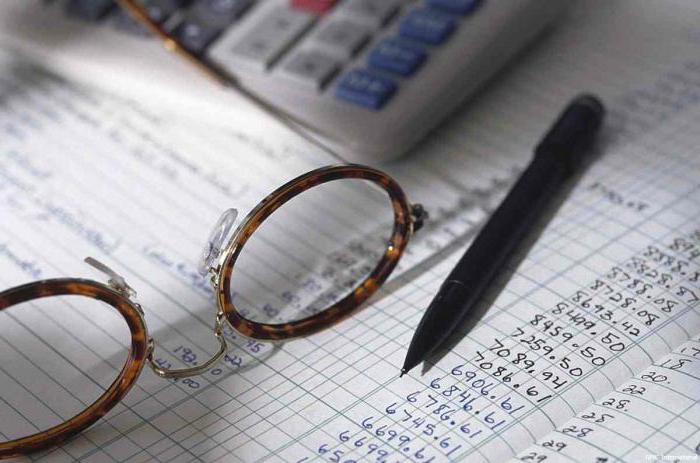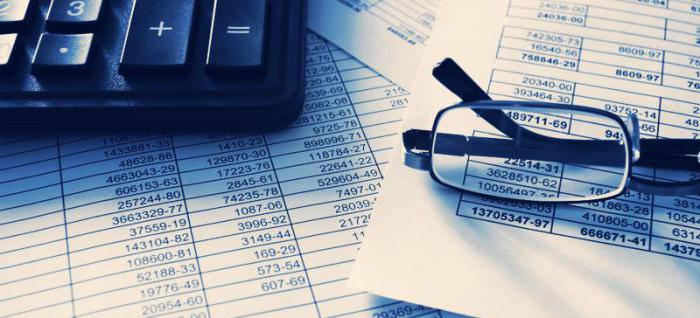Agriculture is one of the leading sectors of the global economy. Features of its organization directly affect the production process and the construction of accounting. A specific object in agriculture, from the point of view of the economy, are animals for fattening and rearing. On the one hand, they can be attributed to work in progress. On the other hand, to the part of the current assets of the enterprise. The registration of animals on rearing and fattening has a number of specific characteristics that should be taken into account by the accountant.
Animals as an object of accounting
In agriculture, workers and productive livestock are distinguished, as well as their young and fattening animals. They are divided into two economic categories: objects of labor and working capital. Moreover, they can move from one state to another, changing the content of the assets of the enterprise. In addition, animal husbandry brings a specific type of product - offspring. Until the young growth, they will also be considered among the objects of labor.

Due to a number of peculiarities, the animals should be counted on growing and fattening separately from the main herd. The following animals can be assigned to this group:
- young animals;
- adults in feeding and fattening;
- from the main herd of rabbits, animals, birds;
- rejected from the main herd for sale (without fattening);
- bee families;
- received from the population for sale.
All animals are kept here for a certain period, which is described by the following cycle: admission, feeding and retirement.
Accounting Objectives
Monitoring rapidly changing their value and type of assets - animals - should be carried out continuously. Counting the number of goals, timely reflection of the transfer from one herd to another, retirement or offspring - accounting must clearly and clearly state in the documentation. This implies certain goals of accounting for livestock and birds for fattening:
- timeliness of data updates;
- sound assessment of incoming animals;
- development of accounting prices, reflection of calculation differences;
- monitoring the safety of livestock for fattening and rearing by responsible persons;
- conducting inventories;
- determination of the results of fattening and rearing.

The registration of animals on breeding and fattening should be organized so that all tasks are carried out and all the features are reflected in the corresponding registers and documents.
Asset Valuation
Accounting is not possible without evaluating the funds of the enterprise. This is a way of reflecting property in the balance sheet and other documents in monetary terms. The basis of the assessment is the actual cost of acquisition or production. When posting for certain types of animals, the following actions are performed:
- Calves in dairy production are accounted for at the planned cost per litter unit. The price of one calf is determined as the sum of the costs of maintaining the bulls and dairy cows. At the same time, only 10% of expenses are attributed to offspring, the rest (90%) is calculated for milk.
- In meat production, the cost of a calf is determined by its weight, multiplying it by the planned cost of a kilogram.
- Chicks are counted without exception for the planned cost of incubation.
- When purchasing animals, they are reflected at discount prices or the actual cost of the acquisition.
- Rejected livestock is recorded at the carrying value of these animals.

Features of the registration of animals in growing and fattening are reduced to the fact that their value is constantly changing.As a result, the cost (planned) of one kilogram or a centner of live weight is important in the assessment. It is for this indicator that cattle are most often written off or transferred. At the end of the year, the cost of production is calculated. The planned cost is adjusted to the actual value, if necessary, making adjustments to the accounting data. The actual price includes the cost of acquiring products, including procurement and transportation costs, excluding VAT and other recoverable taxes.
Revaluation and determination of growth
Young growth and livestock increase their weight. Due to the fact that animals were transferred from the main herd for weight gain or until the moment of growing up, it is necessary to have data on the effectiveness of the process. For this, the animals are constantly weighed, after which they are reevaluated based on weight gain.

So, the registration of animals on growing and fattening involves a systematic weighing at the end of each reporting period, as well as at birth, transfer to another herd or age group, cancellation, admission. After receiving the data, livestock mass is calculated: P = Mto + Mat + Mn + MPwhere M mass indicators:
- Mto - at the end of the period.
- Mat - retired (including fallen) animals.
- Mn - at the beginning of the period.
- MP - animals received during the reporting period.
The procedure is carried out monthly for individual accounting groups, measuring growth in centners or kilograms.
Primary Accounting Rules
In the herd there is a constant movement of animals: some drop out, others arrive. Each transaction should be reflected in accounting data. One of the central places in the registration of animals for breeding is the registration of offspring and rejected cattle, which is carried out according to the following rules:
| Age group | When do posting offspring | Age of transfer to the main herd | Fixing a transfer in accounting data | Date of transfer to fattening |
| Calves buffalo, yaks and cattle | On date of birth | Heifers over 2 years old | On the date of calving | Records in accounting are carried out on the day of culling |
| Gobies over 1 year old | At the age of 18 months | |||
| Piglets | On date of birth | Sows | After weaning the first offspring | |
| Boars | Upon reaching 1.5–2 years | |||
| Chicks | When incubated at the age of 1 day, upon purchase - on the date of receipt | Egg chickens | 150 days from birth | |
| Meat chickens | 180 days after birth | |||
| Ducks | ||||
| Geese, turkeys | At the age of 240 days |
Upon receipt of animals and birds in connection with the contribution of the founder, gratuitous transfer or purchase, the arrival is made out on the day of the purchase, acquisition or receipt of livestock.
For the offspring received, an appropriate posting statement is drawn up, which contains information (weight, gender, uterine number, livestock breeder, etc.) for each animal or bird. When buying livestock, its accounting is carried out on the basis of a bill of lading, invoice, statement of account or a purchase certificate. Moreover, a veterinary certificate is often required.
Synthetic accounting
Information about young animals and fattening cattle is combined into one group and is reflected in the accounting data. For this, account 11 is used, on which the synthetic registration of animals is carried out on growing, fattening. Here, by weight, number of heads and their value, information on livestock and birds belonging to the enterprise is shown. This is an active account, on the debit of which animals come, and on the credit - write off.

Upon receipt of the animals, the account corresponds with the accounts of calculations, inventory, production costs, capital or financial results. It all depends on the circumstances in which poultry or livestock are credited to the balance of the enterprise. The retirement, as a rule, occurs in the relationship of account 11 with the accounts of groups I - IV, VI and VIII.
The amount of costs spent on growing and fattening animals in agriculture is debited to account 20 in the corresponding sub-account. In cases where animal husbandry is not the main activity, use the debit of account 29.
Analytical accounting on account 11
Livestock and poultry by type and location at the facilities of the enterprise are accounted for separately. Analytical accounting of animals for growing, fattening is carried out by age and species groups. To do this, open the appropriate sub-accounts. Examples of analytical accounts and their characteristics will be considered in the table:
| Code | What is taken into account? |
| 11/1 | The movement and presence of young cattle and livestock by age groups and species |
| 11/2 | Cattle rejected from the main herd, needing fattening by species |
| 11/3 | Bird species by groups |
| 11/4 | Fur animals by type and year of birth |
| 11/5 | The presence and movement of rabbits for each species, breed, age |
| 11/6 | The presence of bee families according to the autumn inventory and honeycombs in stock and hives |
| 11/7 | Accepted animals and birds for sale from the population sent for fattening and rearing |
| 11/8 | The movement and presence of other species that do not belong to any of these groups |
If accounting is organized according to a journal-warrant form, the information is reflected in document 14-AIC and statements N 73-AIC. Information is grouped by live weight, number of goals, cost. Monthly turns are recorded for each type of animal and bird.
Accounting for animals
Poultry and livestock are among the animals for fattening and rearing for various reasons: purchase, offspring, culling, accepting as a gift or for sale from the population. In each of these cases, after evaluation, the amounts are credited to debit 11 to the corresponding subaccount. When registering offspring, the act of form No. SP-39 is used, which is signed by financially responsible persons. One of the copies of this document the day after its preparation is transferred to the accounting department. Based on the data of the act, they compose the wiring: Dt “Animals for fattening” Kt “Main production”.

The purchase of poultry and livestock from the population is accompanied by the execution of a contract of sale, acceptance statement. The acquisition is indicated by the wiring: Dt "Animals fattening" CT "Settlements with suppliers." When transferring young animals free of charge, they record: Dt “Animals for fattening” Kt “Incomes of future periods”. When purchasing from third-party enterprises, accounting is carried out on the basis of invoices and waybills. Bookkeeping reflects operations as follows: Dt “Animals for fattening” Kt “Settlements with suppliers”, Dt “VAT” Kt “Settlements with suppliers”.
The organization of the accounting of animals for growing and fattening during culling from the main herd is reduced to the record Dt “Animals for fattening” CT “OS”. The transfer is carried out at the initial cost of the animal. After the next weighing, the weight gain is reflected in the debit of account 11 by posting Dt “Animals for fattening” Kt “Main production”.
Animal retirement
There can be many reasons for writing off cattle and birds from the balance of the enterprise: death, transfer to another herd, sale, slaughter. When these processes are carried out, the data is reflected in the credit of account 11. When transferring heads from one herd to another, they draw up acts of form No. SP-47, on the basis of which animals are recorded for rearing and feeding. Postings are made as follows:
- Dt "Animals fattening" CT "Animals fattening" - internal wiring, characterizing the transfer of livestock or poultry (necessary sub-accounts are used).
- Dt "Transfer of young animals to the main herd" CT "Animals on fattening" - the cost of animals that are transferred to the main herd is allocated.
- Dt "OS" CT "Transfer of young to the main herd" - animals are transferred to the main herd.
The sale of livestock and poultry is accompanied by the preparation of freight forwarding and other waybills with the mandatory application veterinary evidence. Postings are made as follows:
- Dt “Settlements with customers” Kt “Revenue” - determined the amount of revenue from the sale.
- Dt "Cost of sales" CT "Animals for fattening" - written off the cost of retired cattle.
- Dt “VAT” Kt “VAT” - VAT is calculated on the amount of the sale.
Cattle death
In case of death of animals or cases of slaughter, they form an act of form No. SP-54. The products obtained in this case are delivered to the warehouse on invoices. Slaughter make out the following entries:
- Dt "Shortages and losses" Kt "Animals for fattening" - recorded in the accounting of the loss of livestock, or its death.
- Dt "Main production" Kt "Animals for fattening" - reflects the value of animals (including young animals) slaughtered for meat after fattening.
- Dt “Finished goods” Kt “Main production” - hides and meat are capitalized on the warehouse.
At the end of the month, a report of form No. SP-51 is compiled, which, together with the primary documents, is sent to the accounting department.
Audit of accounting of animals for growing and fattening
Checking the availability and registration of animals for fattening and rearing is a rather specific audit object. Specialists set themselves the following tasks:
- verify the accounting data with the actual presence of animals and birds;
- make sure that there are rights to livestock and their documentary evidence;
- check the correctness of the valuation;
- to control the accuracy and timeliness of reflection of economic operations with animals.

Features of the audit of livestock and birds for fattening and rearing are primarily explained by the specifics of the organization of accounting, which describes not only standard procedures for capitalization and write-offs, but also transfer, sale, growth and other operations. The source of information for auditors is the financial statements, accounting policies of the organization, primary documents, registers of analytical and synthetic accounting.
An audit of the registration of animals during rearing and fattening includes a set of measures to verify the conditions of livestock and poultry, the correctness of registration of primary documents and bookkeeping, and the conduct and results of inventories.
Improving the accounting of animals for growing, fattening
The reflection of information about young cattle and birds, as well as fattening animals is very specific. Experts are interested in considering the topic of organizing accounting in an agricultural enterprise, realizing that there is something to work on in this area. The introduction of automated technologies that could process primary documents is proposed. Thus, labor costs will be reduced, and the question of the timeliness of the reflection of data in accounting will be decided. This will lead to an increase in productivity, which will ultimately have a positive effect on the financial result.
The accounting of animals for growing and fattening is both interesting and complex. Unlike other assets, they constantly change their value, which directly affects the balance sheet of the enterprise. Continuous monitoring of the state of livestock and their live weight, as well as the timely reflection of the newly obtained data, is the main condition for accounting in agriculture.

